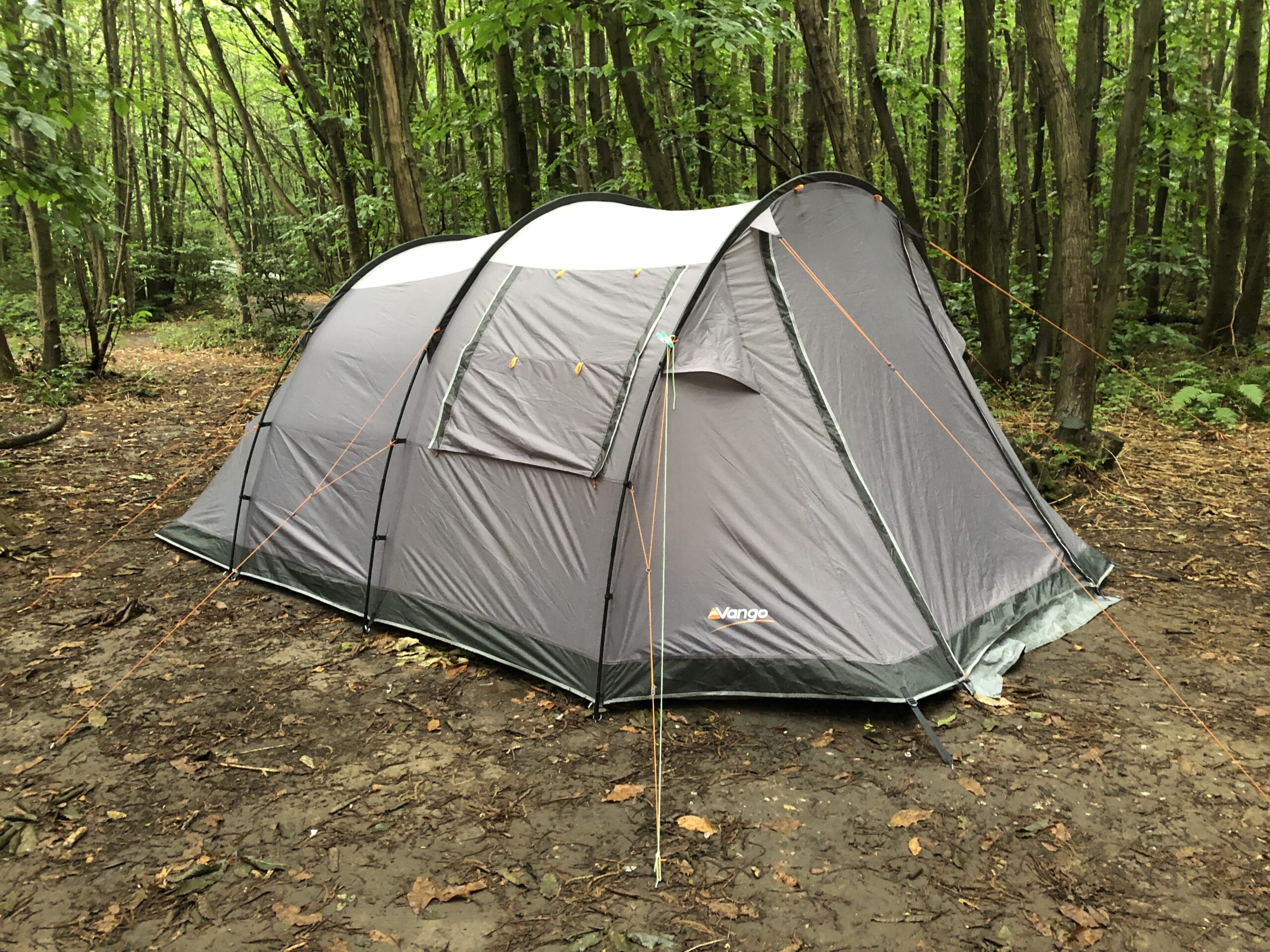Update: it’s 2021, and we’ve pitched our Winslow a good eight or ten times now. It’s suffered rain (thanks, Devon), wind (thanks, the storm that hit Devon) and the freezing cold (thanks, British autumns). It’s still in good shape, and I would still recommend it with exactly the same minor caveats as noted below. The model we bought has been replaced by the Winslow II 500 which looks to me almost the same but with extra air vents.
Original review, written in 2019: We wanted a tent for two adults and one 3-year-old. The Winslow 500 (official info here) is, technically, a 5 person tent – but it fits three of you very well. Four would be doable, five would be a squeeze.
You pitch the tent by laying the outer flat, pushing three long fibreglass poles through sleeves on the outside, and then pushing them up to form the hoops that support the tent. This is very simple once you realise that the shorter pole – with a grey segment – is for the rearmost part of the tent. With two adults you could get the whole thing basically up in ten minutes, and I did it with assistance from Small in about 15. The entire outer is stitched into the groundsheet, so everything inside there has a floor.

The inner covers the space from the rear of the tent to the middle hoop, and clips in easily – that part takes only a minute. It hangs with an airgap of around 10cm around the top and sides. It has two doors, and a removable divider that splits it asymmetrically. There are a few pockets down each side for torches, wallets etc.

Outside the sleeping area, and in the front half-ish of the tent, the living area is protected only by the outer, and the groundsheet below (you could optionally add a carpet etc). It’s big enough to use as storage space, and for adults to move around in without problems, but you wouldn’t particularly want to sit out a day-long rainstorm in there. There are windows on either side – upzip these half-way to see out, and then the same distance again to uncover some meshing that lets air through.
And you’ll want to let some air through. There’s a cleverly covered vent at the back, but in the mornings we had plenty of condensation inside the tent (pretty standard for a plastic-y tent, I believe) – opening up the door and windows for a while sorted it out.
Speaking of the door – the sloped design of the Winslow works well when it comes to keeping out the wind and rain (we had plenty of both), but it does also lead to the design’s biggest weakness: unlike bigger and more expensive tents, there’s no front porch. This means that entering the tent in the rain means doing a sort of dance of getting shoes off outside then falling into the inside without letting the weather in with you – or vice versa if you’re exiting. It’s tricky, especially for kids.
To solve the no-porch problem Vango will sell you two “King Poles” to prop the door up high in the air, which sounds like it might be slightly useful in good weather and a terrible idea in the rain; instead of that we’ve decided to pitch a tarp over the front of the tent, forming a kind of shelter, next time.

(Small update here – we did this on our second trip with the tent, pitching a 3x3m tarp over the front as shown above, and it worked really well – a bit like adding a huge porch. We didn’t see any major rain with it set up this way, so will still need to see how that goes.)

And so, with all that in mind – is it any good? For the money, I’d say yes – we paid less than £200, it fits the three of us well, and so far I’ve pitched the tent three times, each time with no problem. We’ve slept in it through wind and rain, with neither of those getting inside, and there’s no single part of the tent’s construction that feels cheaply made or poorly designed. For short camping trips for three or maybe four, it’s great – just consider packing a tarp as well.

Leave a Reply
You must be logged in to post a comment.